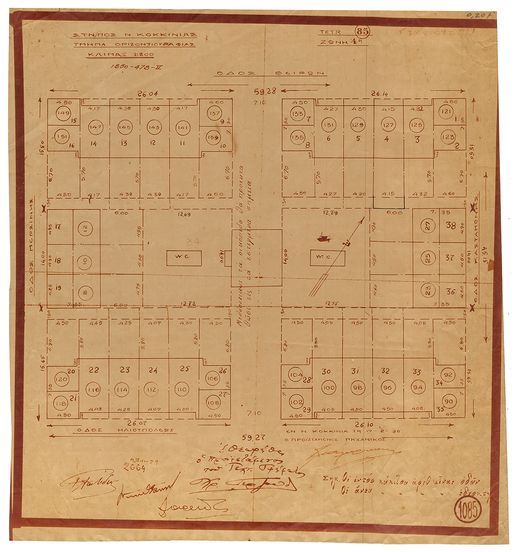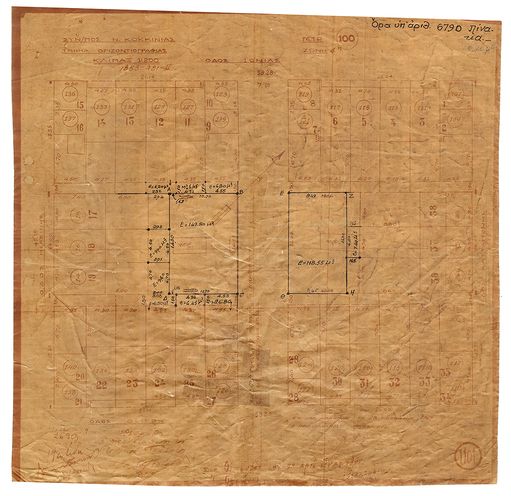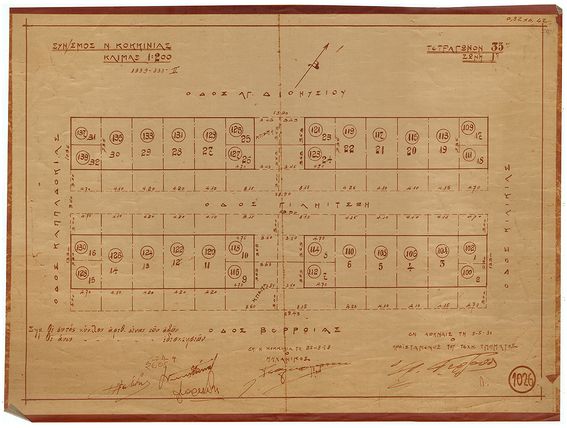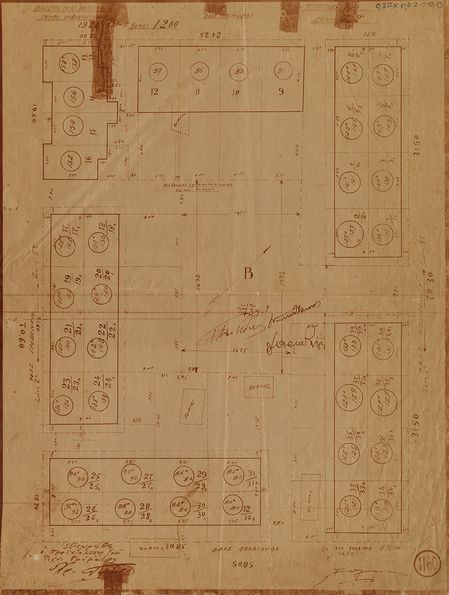The refugee blocks of the Refugee Settlement Commission
‘After the Asia Minor catastrophe, an entire city, Nea Kokkinia, with a population of 35,000 people was built on the left side of the wide, asphalt road Piraeus – Dafni – Thiva and under the Egaleo mountain range. […] When the Refugee Settlement Commission assumed its duties, the settlement of Nea Kokkinia was transferred to its jurisdiction and the construction of houses continued, but now with stone and cement instead of mud bricks. The urban design of Nea Kokkinia is truly admirable because the residents have a lot of space to breathe on all sides. Wide streets delineate the building blocks and criss-cross the settlement’s commercial centres. One could travel unimpeded from one end of the settlement to the other and when eventually its squares and roads are paved with asphalt, Nea Kokkinia will truly be a sight to behold; a model modern city. In total, there are 4,484 houses in Nea Kokkinia today, accommodating 6,390 families. Like in other settlements, the overcrowding here is severe. Just as an example, in a mere few square metres, there are two families sharing a single room and using the same kitchen! In other parts of the city, nine people share a room of 12 square metres.’
In September 1928, Michail Rodas visited the refugee settlement of Nea Kokkinia and chronicled his impressions over two feature articles in the newspaper Elefthero Vima. The extract quoted above summarises his admiration for the potential of this newly established city, but at the same time documents the problems, difficulties, and overcrowding faced by its residents. The first phase of the housing rehabilitation programme designed by the Refugee Settlement Commission encompassed approximately 750,000 square metres of land, which was mentally divided into three neighbourhoods known by the names of their churches, Agios Nikolaos, Osia Xeni and Agios Georgios. These three neighbourhoods contained single-story and two-story tile roof houses arranged into blocks with a courtyard in the middle, a communal lavatory and a utility space which became known as ‘laundry’. The land had been divided in a way that allowed all properties to have a street facade at the front and open space at the back, towards the inside of the block. We are now standing in front of one of those houses.
Over the decades that followed, the original refugee blocks constructed by the Commission underwent changes in appearance as well as in use. To accommodate the needs of the families living there, ground floor houses expanded into the communal open space, the space under the stairway became a small shop or a shed, corner balconies were closed off and became rooms, the ‘laundries’ first housed homeless families and then were torn down after 1960. Today, these houses are inhabited by refugee descendants, internal migrants who bought them postwar, Roma families, and migrants from Eastern Europe, Albania, and Pakistan; moving populations which found refuge in the same blocks, the same houses originally built for the 1922 refugees. Our interest might lie with the successive populations that passed through these houses, but we shouldn’t overlook the relief and rehabilitation efforts, the new cities built for the newcomers, the services and rehabilitation schemes devised to aid the refugees. Despite the problems, delays and injustices which plagued the rehabilitation process, the arrival of the refugee populations of 1922-1924 was at least handled according to an organised relief plan. Since then, the Greek state has never developed a similar plan to manage the populations arriving in its territories.
Objects





